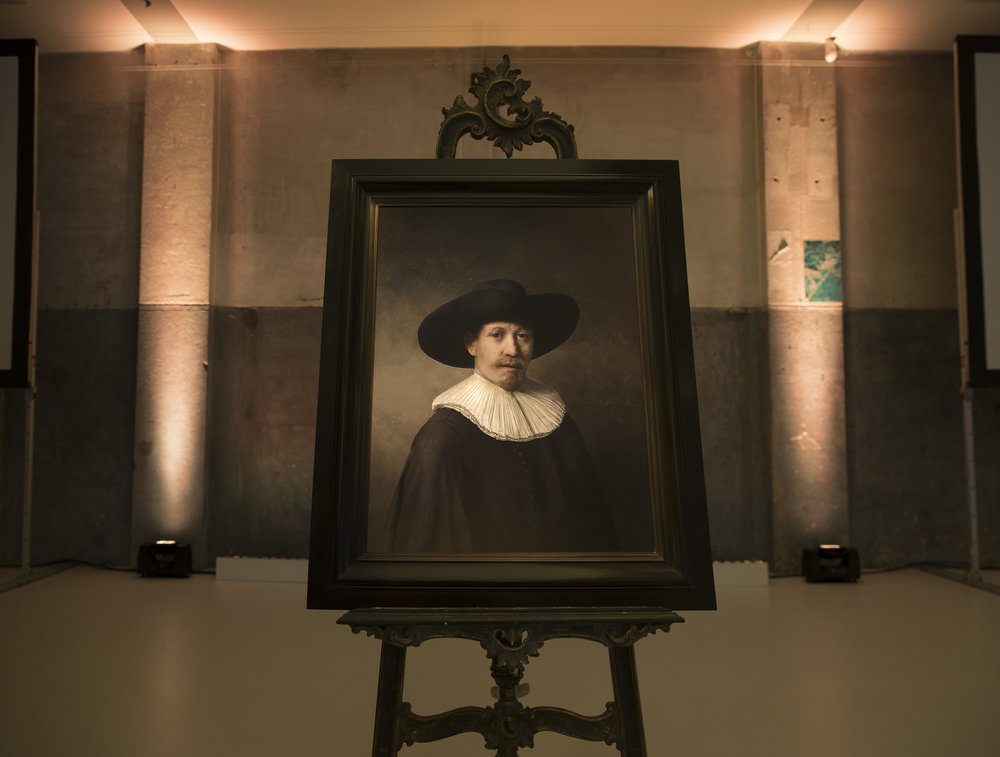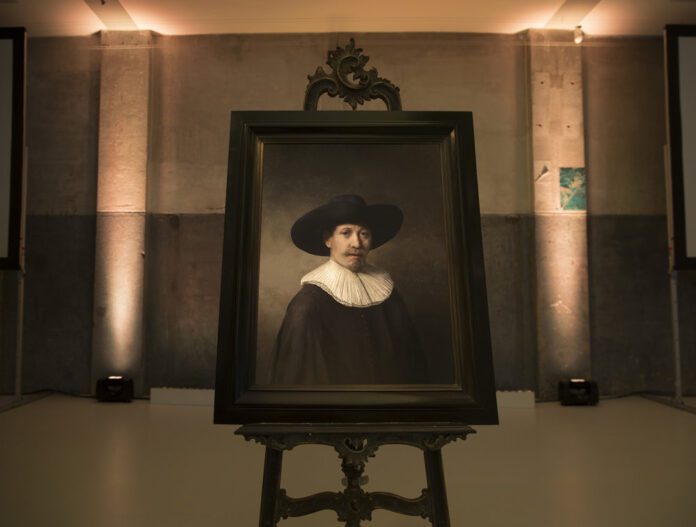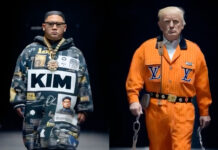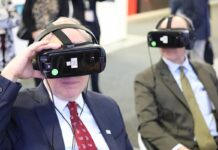In 2014, a group of data scientists from Microsoft teamed up with AI experts to create a computer program that could generate pictures in the style of Rembrandt. The team created a deep learning network which reviewed 150 gigabytes’ worth of Rembrandt paintings. The network soon learned to recognize distinctive features of Rembrandt’s works be it in terms of subjects, style, brush strokes and even how the Dutch master painted specific body parts such as hands, eyes, and noses. Blending various parts of Rembrandt paintings, the network created a new 3D painting dubbed “The Next Rembrandt”, shown below.

The new painting cannot be classified as an original Rembrandt as the Dutch master did not paint it. Rembrandt did not paint any works after October 4, 1669, the date of his death. And yet, the painting is not “not a Rembrandt.” The painting’s style is uniquely Rembrandt. The subject matter, brush strokes, use of light, depiction of the face and body are all distinctly Rembrandt. If this painting were hung alongside other Rembrandts in an art exhibit, art enthusiasts would be unlikely to distinguish it from other works painted by the master.
This new painting has been classified as a ‘deep fake’ image. The word ‘deep’ emphasizes the deep learning technique that the AI system utilized to generate the painting. Yet this term is somewhat misleading as it places too much emphasis on the technological process by which the painting was created, rather than focusing on the painting’s impact on our perceptions of reality. A more fitting term might be a ‘Real Fake’. Undoubtedly the painting generated by the AI is fake and is not an original Rembrandt. Yet, as argued above, it is not “not” a Rembrandt and so at some level it is real. Real in the sense that it captures everything that was unique and distinct in Rembrandt as an artist.
The term ‘Real Fake’ captures this unique moment in the evolution of digital technologies. Increasingly, digital technologies are used to create new or alternative realities. Put differently, digital technologies are constantly used to challenge our perception of reality. We have grown accustomed to terms such as augmented reality and virtual reality and no longer pause to ponder their meaning. Is augmented reality another reality? A different reality? Another layer of reality? Or just reality?
IR scholars often argue that perceptions of the past shape the present. This is quite evident in the world of diplomacy as diplomats summon the past to make sense of the present. Such is the case when diplomats use the term “Cold War” to define relations between China and the US, or when the “Chip Race” is discussed with a clear reference to the “Space Race”. History is also used to justify and narrate state action. Russia is “de-nazifying” Ukraine, America left Afghanistan fearing another “Vietnam” while the “Arab Spring” was a modern incarnation of the “Spring of Nations” in 1848.
However, visions of the future also shape the present, and may determine the actions of societies. Presently, visions of the future, shaped and disseminated by teach actors, all turn reality into something malleable: something that can be added to, something that can be molded, something that can be created or generated. Augmented reality adds another layer to reality. Although presently limited to catching Pokémon’s, tech visions of our future depict us all walking with smart glasses that generate a stream of information consisting of facial recognition, navigation and communications.
Virtual meetings flatten reality as time and space are compressed and 3D individuals from across the world are depicted in 2 dimensions. Virtual reality extends reality to new domains. At the moment, virtual reality is also limited. Once placing VR helmets, we can enter and explore new spaces, yet we are still ourselves. We are simply teleported to another reality. Tech visions of the Metaverse suggest that we will one day seamlessly inhabit both realities, the physical and the virtual. The question which of the two realities is real will then grow exponentially more difficult to answer.
Notably, tech visions of the future are given shape and form through popular culture. Shows such as Black Mirror or Westworld depict new worlds with new extended realities. Pop culture is also concerned with alternative realities. The show For All Mankind deals with an alternative reality in which Russia won the Space Race. In The Man in the High Castle, the Nazis won World War 2 while in SS-GB, the UK is occupied by Nazi Germany. Popular films of the last decade have also explored other realities be it Inception, Ready Player One and Avatar.
The idea of malleable reality, or Real Fakes, is also part of our daily language. Terms such as ‘Fake News’, ‘Alternative Facts’, ‘Misinformation’ and ‘Disinformation’ are heard everywhere. This is in part due to the use of new technologies to challenge our perceptions of reality. Yet it may also be the result of tech visions of the future in which reality becomes malleable.
The question that follows is what is the societal impact of these tech visions, and what have they to do with diplomacy?
The answer is anxiety. A world of many realities, or malleable realities, is one that cannot be fathomed. This is already evident thanks to the multiple realities created by social media. In my social media reality, Russia invaded Ukraine. In another user’s reality, Ukraine bullied Russia into a war. In my reality, China violates human rights. In another social media reality, China liberates countries from historical colonial powers. In my social media reality, Russia has destroyed Syria. In another reality, Russia liberated Syria. A world of multiple realities is one that, by nature, generates anxiety as the world becomes uncertain. The answer to simple questions such as how many Russian troops are in Ukraine, how did the Covid19 pandemic start and where is north become unattainable. It is this anxiety of lost reality that breeds a desire for radical leaders that promise a binary, analog future of good and bad, friend and foe, and man and woman. This is true of radical movements such as ISIS as well as radical and populist leaders in democracies. Both offer a binary reality of great states and failed states, of allies and enemies and of certainty.
For diplomats, ‘Real Fakes’ and malleable reality presents several challenges. First, anxiety and a desire for radical leadership undermines multilateralism. Radical leaders put their nations and people first. Trump’s America first and Brexiter’s UK first are just two examples. As digital technologies promise to blur the boundaries of reality, people passionately cling to national boundaries. The challenge to multilateralism prevents diplomats from jointly addressing shared and pressing challenges such as climate change. Second, in a world of multiple realities facts lose meaning. This undermines diplomatic approaches to conflict resolution. How can diplomats resolve the Ukraine War if there is no war, or if there are no Russian troops in Ukraine or if Ukraine is bent on eradicating Russia? Conflict resolution rests on diplomats reaching an agreed upon definition of reality. But in a world of Fake Reals and malleable reality there is no agreed upon definition of reality. Finally, the challenge to reality breeds new and aggressive forms of diplomacy. Just as people cling to radical leaders, so they approve of radical diplomacy such as China’s “Wolf Warrior” diplomacy or Russia’s “Slander Diplomacy”. In a profession that seeks the middle ground, radical diplomacy muddies the water confounding crises and breeding tensions.
The solution may be three-fold. First, diplomats must understand tech visions and create a different, credible vision of a shared future. One in which reality is not lost and one in which truth and facts exist and matter. Second, diplomats must contend with the demons of social media. The regulation of social media platforms must become the top priority for all diplomats and states who believe in multilateralism, who seek the middle ground who desire an end to conflict and war. This cannot wait. Social media is challenging societal understanding of reality and reality must prevail. Third, and most importantly, diplomats must experiment with all those technologies that turn reality malleable. Only through personal experiences can diplomats understand the challenge that virtual reality, augmented reality and AI poses to the world, and their states.













